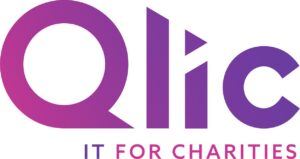Charity fraud is a widespread issue that affects both charities and their donors. Charity fraud exploits nonprofit organisations or their donors’ personal information for financial gain. This data can range from financial information such as bank account details to sensitive data like addresses and phone numbers. Charities are commonly targeted for fraudulent activities due to their lack of resources to help prevent cyber attacks. Charities are commonly targeted for fraudulent activities due to their lack of resources to help prevent cyber attacks. They are also more vulnerable to such attacks as their employees are often a mixture of paid staff and volunteers. This combination and a lack of resources can make IT training difficult. This means that charity staff can not always identify the warning signs of fraud taking place. It is also more likely for charities to lack auditing and evaluation methods necessary to spot or prevent fraud.
In this blog post, we will examine different types of charity fraud, highlight the tactics utilised by fraudsters, and suggest ways to minimise the risk of falling prey to these scams. Let’s learn more about this crucial issue and what we can do to protect the integrity of charitable organisations everywhere.
What is Charity Fraud?
Charity fraud occurs when individuals or organisations mislead donors about the purpose, beneficiary, effectiveness or amount of charitable donations in order to obtain money or other resources. It is a type of white-collar crime, which is committed for financial gain and is non-violent in nature. The two types of charity fraud are:
- Internal Charity Fraud
- External Charity Fraud
Internal charity fraud occurs when individuals within a charitable organisation embezzle, divert or misuse funds intended for charitable activities for personal gain. This type of fraud can occur at any level of the organisation, and it may involve creating false invoices, forging signatures, or manipulating financial records to conceal theft. The impact of internal fraud on a charitable organisation can be significant, causing a loss of credibility and damage to its reputation.
External charity fraud is committed by individuals or organisations outside of the charitable organisation. It may involve creating a fake charity or using the name of a legitimate charity to solicit donations from unsuspecting donors. Other tactics employed by external fraudsters include telemarketing fraud, email phishing scams, and online crowdfunding fraud. External fraud can cause financial losses to donors, bring disrepute to legitimate charities and cause trauma to affected communities.
It is important for charitable organisations to establish internal control measures and instil an ethical culture to mitigate the risks of internal fraud. They should also provide financial transparency to donors, maintain proper records, and monitor the use of funds. Donors should research charities before they donate, verify the legitimacy of the charity, and ensure that their contributions are being used as intended.
Charity Fraud in 2022
Charity fraud is an unfortunate cyber crime that takes place hundreds of times every year. The Charity Fraud Fraud Report 2022 was conducted by the Accountancy firm BDO and the Fraud Advisory Panel on 100 UK-based charities. The survey shows common methods of fraud, their impact and what actions and barriers charities can use to help organisations stay secure from instances of fraud.
The survey reported that 36% of its charity respondents were victims of fraud or attempted fraud in 2022.
Internal Charity Fraud Examples
The examples of charity frauds suffered are:
- Misappropriation of cash or assets
- Supplier/Procurement fraud
- Expenses/Subsistence Fraud
- Authorised Push Payment fraud/bank mandate fraud
- Fake Beneficiary
- Grant Fraud
- Donation/Legacy Fraud
- Bribery and/or Corruption
The Charity Fraud Report highlighted the rise in internal fraud in charities. 43% of charity victims reported misappropriation of cash or assets by staff members – double that of 2021. This type of fraud is most definitely internal as an individual within the charity organisation has embezzled, diverted or misused funds meant for charitable activities.
A further 26% of organisations surveyed reported the detection of staff expenses fraud in 2022. This is somewhat similar to the statistic above but more personal to the individuals as it is to do with staff expenses. This is a less direct form of internal fraud but is still misusing the charitable organisation’s funds.
Finally, 11% reported that staff have misused awarded Grants to charities and embezzled them. A charity could be accepted for a Grant and have a plan on what this will be spent on to improve the current charity. However, the 11% in this statistic did not use it to benefit the organisation, but in fact diverted or misused the funds for their personal gain.
External Charity Fraud Examples
The report also included examples of external frauds that were on the rise in 2022, specifically:
- supplier procurement fraud
- authorised push payment fraud, bank mandate fraud and payment diversion fraud.
The survey reported a significant increase in supplier procurement fraud in 2022 (up from 5% in 2021 to 26% in 2022). This type of fraud can involve inflated invoicing. This is where an invoice is issued for large sums over and above the value of goods or services provided. It can also involve invoicing from fictitious suppliers or invoicing from fictitious suppliers or even lying about credentials on credit cards, past performance, or capabilities. Supplier procurement fraud commonly involves collusion between an internal member of staff and a third-party. In this way, it can also be seen as internal fraud.
The Charity Fraud Report also revealed that 20% of charities reported detecting authorised push payment fraud, bank mandate fraud and payment diversion fraud. The definitions of these are as follows:
- Authorised Push Payment Fraud: This type of fraud occurs when a fraudster convinces a cooperative charity to send money from their own bank account to accounts owned by the fraudster. This can be achieved by posing as a company or individual to whom money is owed or pretending to be a bank representative.
- Bank Mandate Fraud: This can occur when fraudsters set up fake accounts and impersonate a legitimate supplier to fool an organisation into changing the direct deposit details of the supplier’s payments to accounts controlled by the fraudsters.
- Payment Diversion Fraud: this happens when fraudsters interfere with the payment process of an legitimate charities and divert payment to their own account.
Charity Fraud in 2023
So, we’ve assessed the main charity frauds and statistics encountered in 2022, but how does this compare to charity fraud in 2023?
According to the survey, 41% of individuals thought that cybercrime would pose the biggest fraud risk for their charity over the next 12 months – particularly in the form of phishing for financial information, hacking and social engineering attacks that lead to bank fraud. As we all know, there has been a significant increase in phishing attacks. This can automatically create a concern for fraudulent activities. This is why you should make sure your charity cyber security includes the correct software as well as cyber security training for staff. The software and staff will then be better placed to detect cyber attacks and fraud.
In addition, 40% of surveyed individuals acknowledged that the growing trend for hybrid working left their charity exposed to risky work practices due to a lack of cyber security training for employees. Making sure your charity staff and volunteers are aware of the growing cyber threats and how to spot them is crucial. This will help reduce the number of cyber attackers committing fraudulent activity towards your organisation.
Final Thoughts on Charity Fraud Examples
In conclusion, charity fraud is a serious issue that has far-reaching consequences for an organisation’s online accountancy. Charity fraud can cause significant financial losses, damage to reputation and harm to communities. Charitable organisations must establish internal controls, provide financial transparency, and implement anti-fraud measures to detect and prevent fraud. Ultimately, charity fraud is a complex issue that requires collaboration from all stakeholders to be effectively addressed.
Do you want to find out how to improve your charity’s current cyber security landscape? Book your free cyber security consultation with Qlic IT below.






